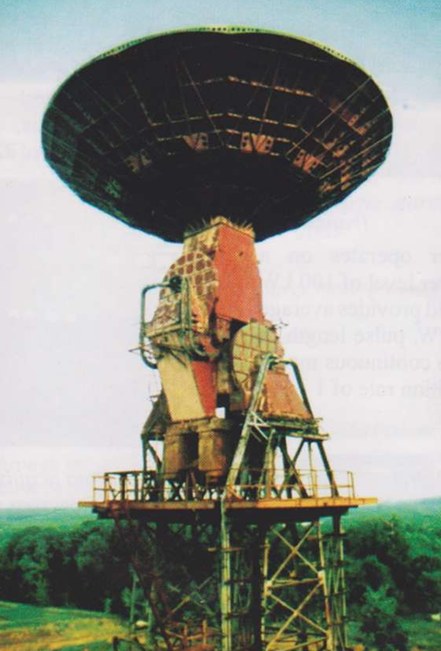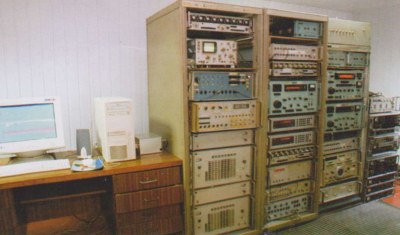Radiophysical Observatory

The Department and its constituent Radiophysical Observatory were established in 1964. The Radiophysical Observatory is located near Kharkiv city and includes a broad set of radar and radio instrumentation. The Observatory comprises the MF radar, the HF Doppler radar (at vertical and oblique incidence), the satellite radio beacon receivers, the magnetometers, and the ionosonde. The instrumentation allows the researchers to investigate the various interacting processes operating in the ionosphere within an altitude range of ~ 60 - 1000 km and the characteristics of radio-wave propagation within a frequency band of up to approximately 2 GHz, simultaneously with magnetometer measurements.
Research
The Department of Space Radio Physics is one of the leading research constituents at Kharkiv V. Karazin National University. Over 20 researchers work with faculty and students on projects funded by government, foundations, and industry. The Department of Space Radio Physics places great emphasis on research, and supports several major groups, which have a worldwide reputation. It is unique in Ukraine in its studies of processes linking the surface of the Sun to interplanetary space, the Earth's magnetosphere and ionosphere. Back in the 60s, the space physics group was the first to promote and to implement

Students
The students, department faculty, and staff participate in research programs, make use of the Observatory facilities in their research, and undertake theoretical studies in numerous topics.
Topics of particular interest include:
- Design and production of MF radars for measuring large mesospheric electric fields Mesospheric electrodynamics
- Technique for measuring large mesospheric electric fields Magnetospheric and ionospheric storms and substorms Mesoscale ionospheric phenomena and structures Magnetosphere/ionosphere/atmosphere coupling
- Electric fields and their role in the transfer of large-scale perturbations in the region from the lithosphere through the atmosphere and ionosphere to the magnetosphere Large-scale perturbations in the near -Earth environment from localized sources of energy, which include HF high-power radio waves, rocket launches, earthquakes, etc. Updating the global models of electron density by analyzing dual-frequency signals from
- satellite radio beacons
- MF radar differential absorption experiment
- Spaced antenna drift technique
- Magnetometer technique
- High-frequency Doppler technique
- GLONASS TEC measurements
- Cicada satellite TEC measurements
- High-power radio waves in the ionosphere
- Bistatic HF radar diagnostics of field-aligned irregularities induced artificially Bursts of sporadic emissions from the ionosphere in the VHF and UHF bands Solar/geomagnetic activity and public health

International Collaborations
- Department is committed to maintaining strong relationships with educational and research institutions around the world and business and industry in Ukraine. Current collaboration includes
- Massachusetts Institute of Technology Haystack Observatory (U.S.A.)
- University of Massachusetts Lowell Center for Atmospheric Research (U.S.A.)
- University of Saskatchewan Institute Space & Atmospheric Studies (Canada)
- University of Electro-Communications Department of Electronic Engineering (Japan)
- Clemson University (U.S.A.)
- Cornell University (U.S.A.)
|
|


